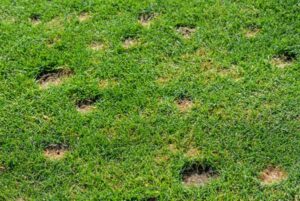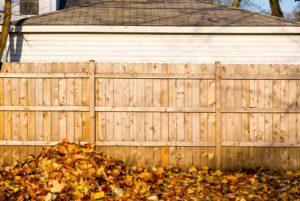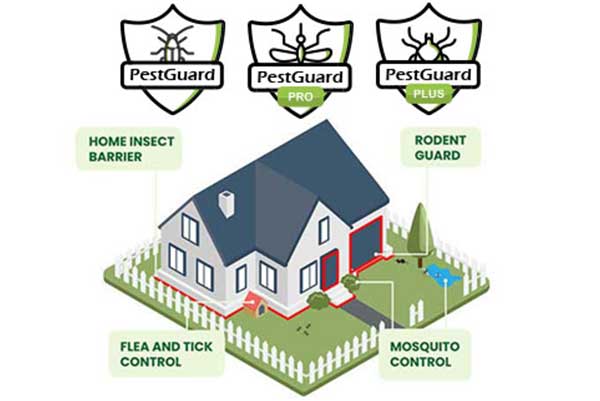Preparing for Fall: Midwest Lawn Care and Pest Management Tips
As summer winds down and fall begins, it’s important to adjust your lawn care practices to keep your yard healthy and primed to come back strong and vibrant the next spring. Autumn in the Midwest still has plenty of warm days where a variety of lawn pests remain active before temperatures drop. In fact, this time of year is the most active season for some pests before they go dormant or attempt to make their way indoors for the winter. Take steps to protect your lawn by eliminating pests, improving soil health, and employing proper maintenance and winterizing practices.
Understanding Fall Lawn Pests

Grub larvae can cause serious underground damage by eating roots in a lawn.
Most common lawn pests are busy laying eggs or finding winter shelter with the approaching change in seasons. Addressing pest control at this time of year is an excellent strategy to destroy eggs to prevent them from hatching. It’s also smart to eliminate adult insects trying to escape the cold inside your home.
Lawn pests pose a double hazard as they can destroy your well-kept lawn and could make you sick by passing along diseases, such as Lyme disease from ticks, typhus from fleas, and West Nile virus from mosquitoes. Some indicators that you have a pest problem include dead patches of grass, holes in the lawn, and chewed or discolored blades of grass.
Fall pests to watch out for include:
- Ants
- Beetles
- Crickets
- Grubs
- Mice & Rats
- Millipedes
- Moles
- Mosquitoes
- Spiders
- Ticks
These pests can cause a variety of lawn problems by eating your grass’ blades, stems, and roots. Even those that don’t directly impact your lawn itself, like mosquitoes, make a nuisance of themselves until your yard is unusable.
Midwest Pest Management
You don’t have to put up with invasive pests that threaten your family’s health or cause unsightly lawn damage. RYAN has the solution to all your lawn pest problems with services designed specifically for your area’s common pests and climate.
Home Insect Barrier
This treatment option essentially creates an invisible barrier around your property to keep pests out. It’s suitable for multiple insects, including ants, millipedes, crickets, and spiders. The Home Insect Barrier package includes four treatments spaced throughout the year to target bugs at peak times in their lifecycle to provide effective results.
Mosquito Guard
Enjoy your backyard in peace without irritating mosquitoes. The RYAN Pros take special care to target areas of your lawn that make prime breeding grounds while avoiding more delicate plants. Each Mosquito Guard treatment lasts for up to four weeks and the package is customizable to include up to seven applications each year for effective coverage no matter the severity of the infestation.
Flea & Tick Control

Dogs can get fleas from a lawn that has not been treated for pests.
Fleas remain active throughout the fall and ticks pose a threat until temperatures drop below freezing. These pests are not only annoying, but they can be dangerous if they transmit diseases to your family or pets.
RYAN’s Flea & Tick Control treatments use liquid and granular materials applied to your lawn four times throughout the year for effective results that last six to eight weeks.
Rodent Guard
Remove mice, rats, and other rodents in a humane way with RYAN Pest Control’s Rodent Guard. This method is safe and effective at dramatically reducing rodent populations by placing bait stations in prime areas of concern.
Mole Control
Moles can cause a great amount of lawn damage by tunneling. The resulting ridges may lead to grass dying or even personal injury from a fall. RYAN’s Mole Control Program is a proven method to eliminate moles and is available in many locations.
PestGuard Packages
Get year-round protection with one of RYAN’s popular PestGuard Packages. These bundled services save you money while delivering incredible protection from a variety of pests. Each comes with free service calls and a 100% satisfaction guarantee.
-
Three Pestguard Packages available.
PestGuard: This affordable package is the standard PestGuard bundle with six treatments in total, including Home Insect Barrier, Rodent Guard, and Meadow Vole treatment as needed. Visits take place every other month.
- PestGuard Pro: The Pro version gets you all the services included with PestGuard standard plus three extra visits and Mosquito Control. A monthly treatment application schedule starts in May to target mosquitos.
- PestGuard Plus: This bundle includes everything offered in the PestGuard Pro package along with Flea & Tick Control and Complete Home Protection. Mole control is also included, as needed.
PestGuard bundles provide a comprehensive and customizable approach to pest control and are available in all service areas:
RYAN strives to provide effective and safe pest control. Our formulas are crafted from carefully chosen ingredients so our treatments are environmentally friendly and safe for use around your family and pets.
Seasonal Lawn Maintenance
Regular care and maintenance using methods appropriate for the season go a long way towards pest prevention.
Mowing
Grass growth may slow during the fall, but you still need to mow until it frosts and your grass goes dormant. Stay consistent by mowing to the same height you’ve maintained during the summer until the final one or two cuts of the season. If you desire, you can lower the mower blades at that time. Take care to avoid cutting off more than one-third of the grass leaf in a single cutting to avoid damage.
Weed Control
Weeds compete with your grass for nutrients and attract harmful pests. Continue to weed thoroughly throughout fall. Make sure you pull weeds out root and stem to stop them from regenerating. Dispose of all pulled weeds. Weeds make an enticing environment for all kinds of pests, so don’t leave them lying around to attract insects.
Fertilizing
Grass blade growth slows as temperatures cool in autumn, but the grass roots continue to grow. They require fertilizer to get the nutrients they need to stay healthy and build up reserves of nutrients for the winter. It’s best to apply fall fertilizer twice, once around late August and another right before it frosts. Apply your fertilizer applications after aerating your lawn to allow nutrients to go deep into the soil.
These practices all contribute to preventing pests from invading your lawn by making it healthier and more resilient. However, even the best prevention efforts aren’t completely effective. If you want to keep pests at bay and your turf in excellent condition, reach out to the experts at RYAN for professional lawn and pest control services.
Fall Lawn Aeration and Overseeding
Fall lawn care is crucial for the continued good health and appearance of your lawn next spring. Lawn aeration and overseeding help improve soil health, promote root growth, and thicken the lawn, making it less susceptible to pest damage.
Lawn Aeration
Normal traffic and use contribute to soil compaction over time. Hard, packed-down soil is a problem because it prevents water, air, and essential nutrients from penetrating down to the roots of the grass. Aeration helps to break up dense soil by poking holes or removing small plugs of soil. For small lawns, a garden fork works perfectly to poke holes two to six inches apart. If you have a large area to aerate, you may want to rent a walk-behind aerator.
Overseeding
Harsh summer temperatures, heavy use, droughts, disease, and pests can all lead to bare spots and damaged grass. It’s best to take action to correct these issues in the fall so you can enjoy an even grass cover in the spring. Instead of only addressing the sparse areas of your lawn, try overseeding by spreading grass seed over the entire lawn. Not only will this fill in bare areas, but it can also give you denser grass with a more vibrant color and healthier appearance.
Raking and Debris Removal

Leaf piles attract pests, can damage your fence and smother your lawn.
Fallen leaves and other debris piled up on your lawn create excellent shelter and breeding grounds for pests. Raking up leaves as they fall and clearing away debris deprives pests of moving into these shelters, making it essential to keep your lawn clean and tidy to avoid pest infestations. Along with removing leaves and debris, store firewood in neat stacks, ideally off the ground, to avoid attracting termites and ants.
Winterizing the Lawn
The approach of winter means that you need to adjust certain lawn care habits to reflect the changing needs of your grass and plants.
Adjust Mowing Height
Mow your grass to a height of about two and a half to three inches. Cutting your grass too short can cause thatch to build up. This thick layer of tightly woven debris and dead organic material is an ideal environment for pests, plus it prevents water and air from reaching the soil. You can cut your grass shorter for the final cuttings of the season if you choose.
Water Correctly
Summer takes a toll on your lawn. Help it recover with proper watering. Most lawns need around one inch of water per week for optimal soil moisture content. Give your lawn a good soak every few days. Adjust your manual watering schedule as needed if you get rainfall to prevent overwatering. Stop watering when freezing temperatures arrive.
Protect Vulnerable Plants
Protect your vulnerable grasses and plants from invading pests during the fall and winter. One effective method is placing physical barriers like mulch around trees and shrubs. Plant cages also work well for smaller plants. The above methods of aeration, fertilization, watering, and routine lawn maintenance help protect your grass by keeping it healthy. Professional pest control treatments are also a fall must.
Trust the RYAN Pest Pros
RYAN is an award-winning company with a reputation for excellence that makes it the best company for all your lawn pest needs. We have created and used sustainable pest control solutions for residential areas. Our RYAN Pros are highly trained and dedicated to providing every client with personalized lawn care to maintain a beautiful and healthy lawn.
Fall is a crucial time for lawn care. Taking action to eliminate lawn-destroying pests and prepare your lawn for the upcoming winter ensures you can enjoy a healthy and lush yard again once winter snows give way to spring. Contact RYAN Pest Control today to learn more about our services and get started with a Free Estimate!










